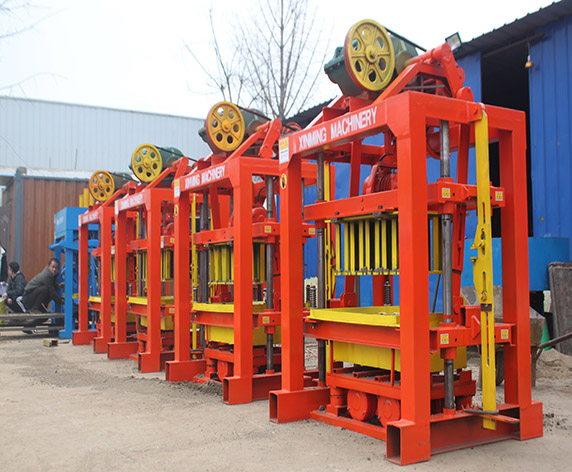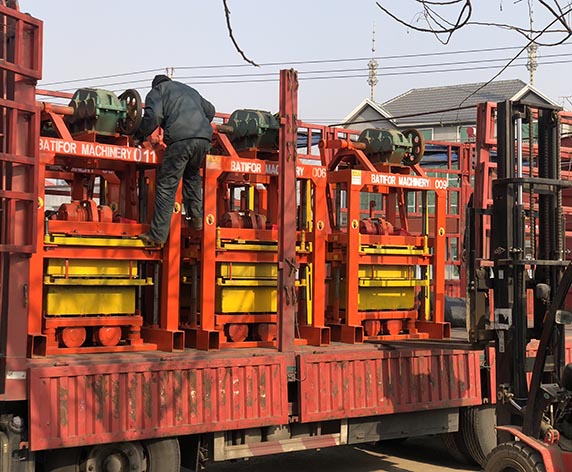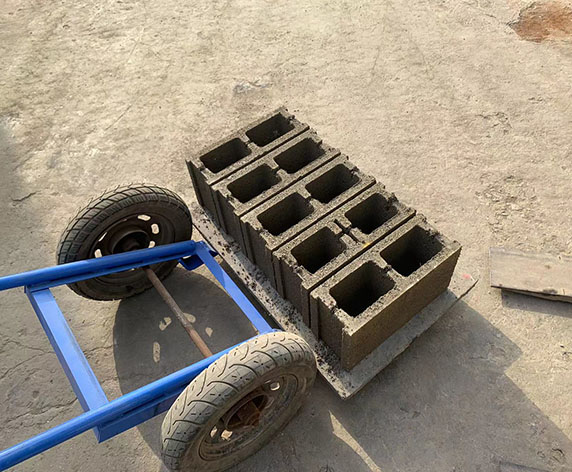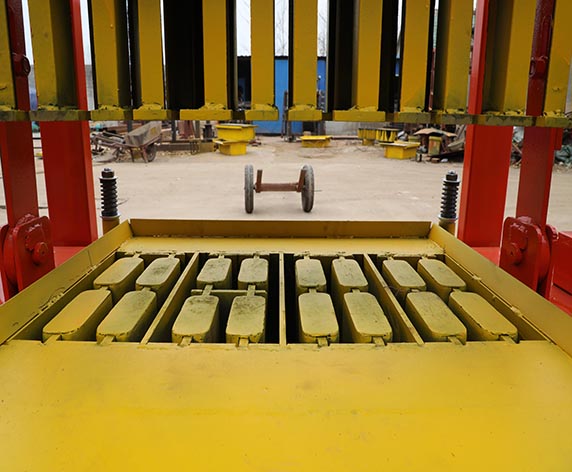



The QTJ4-40 is a small and stationary concrete block machine that specializes in the production of hourdis blocks, a type of precast concrete block used in construction to create floors and ceilings. In addition to hourdis blocks, the machine is capable of producing various other block types, making it a versatile solution for construction businesses with diverse project requirements.
In the ever-evolving construction industry, the demand for efficient and reliable block-making machines has led to the development of various innovative models. Among these, the small stationary concrete hourdis block machine QTJ4-40 has gained recognition for its versatility and reliability. This compact and efficient machine has become a popular choice for construction businesses, particularly those engaged in small-scale projects or community development initiatives.
The QTJ4-40 stationary concrete hourdis block machine is renowned for its simplicity, ease of operation, and suitability for various block types, including hourdis blocks, hollow blocks, solid blocks, and interlocking pavers. Its stationary design allows it to be installed in limited spaces, making it an ideal choice for small construction businesses or those looking to venture into the block-making industry. In this article, we will delve into the key features and advantages of the QTJ4-40 small stationary concrete hourdis block machine, focusing on its versatility, reliability, and impact on construction projects.
| Main Technical Parameter | |||
| Dimension of host machine | 1650x1150x2200MM | Total machine power | 8.8KW |
| Mould period | 40S | Pallet size | 850x450x20MM850x550x20MM |
| Workshope area | 60m² | weight | 1200kg |
| Capacity | |||
| Block Size | PCS/Mould | PCS/Hour | PCS/10Hours |
| 400*200*200mm | 4 | 320 | 3200 |
| 400*150*200mm | 5 | 400 | 4000 |
| 400*100*200mm | 7 | 560 | 5600 |
| 225*112.5*60mm | 12 | 960 | 9600 |
2.1. Versatility in Block Types
One of the primary advantages of the QTJ4-40 is its ability to produce a wide range of block types. From hourdis blocks used for floor and ceiling construction to hollow blocks, solid blocks, and interlocking pavers, the machine's versatility allows construction businesses to cater to various project needs and market demands.
2.2. Small Footprint and Stationary Design
The compact size and stationary design of the QTJ4-40 make it an excellent choice for construction businesses with limited space. Its small footprint allows it to be installed in small workshops or construction sites where space is a premium, without compromising on production capacity or efficiency.
2.3. User-Friendly Operation
For construction businesses and operators, ease of operation is paramount. The QTJ4-40's user-friendly design and straightforward controls ensure that even operators with minimal technical experience can use the machine effectively. This simplicity reduces training time and minimizes the risk of errors during operation.
2.4. Low Investment and High Returns
The QTJ4-40's affordability and low initial investment cost make it an attractive option for small construction businesses or newcomers to the industry. Despite its low price, the machine's efficiency and high-quality output contribute to significant returns on investment through consistent block production.
2.5. Efficient Production Capacity
The QTJ4-40's efficient production capacity allows it to produce a considerable number of blocks per hour. This high output ensures that construction projects progress smoothly without delays, meeting project deadlines and enhancing overall productivity.
2.6. Solid Construction and Durability
Manufactured with precision engineering and quality components, the QTJ4-40 is built to withstand regular use and challenging construction environments. Its durability ensures long-term reliability and minimizes maintenance requirements, contributing to cost savings for businesses.
The operation of the QTJ4-40 is straightforward, and the machine follows a series of steps to produce blocks:
Step 1: Raw Material Preparation - Prepare the concrete mixture with the right proportions of cement, sand, and aggregate. Thoroughly mix the materials to achieve a homogenous mixture.
Step 2: Filling the Mold - Place the mold in the machine's mold box. Fill the mold with the prepared concrete mixture, ensuring it is evenly filled to create a uniform block.
Step 3: Block Shaping - Once the mold is filled, the machine's hydraulic system will apply pressure to shape the concrete mixture into the desired block design.
Step 4: Demolding - After the block is formed, carefully remove the mold to demold the freshly made block.
Step 5: Curing - Allow the blocks to cure and gain strength before they are ready for use in construction projects.
The QTJ4-40's versatility and efficiency offer construction businesses a competitive edge in the market. Its ability to produce various block types, including hourdis blocks, allows businesses to take on diverse projects, expanding their market reach and revenue potential.
The machine's low initial investment cost and high production capacity enable small construction businesses to optimize their resources and achieve profitable returns quickly. The consistent production of high-quality blocks enhances customer satisfaction, fostering long-term business relationships and ensuring repeat orders.



The QTJ4-40 small stationary concrete hourdis block machine stands as a testament to the advancements in block-making technology, providing construction businesses with a versatile, reliable, and budget-friendly solution. Its ability to produce various block types, coupled with its user-friendly operation and low maintenance requirements, makes it a valuable asset for construction projects of different scales and complexities.
As the construction industry continues to evolve, the QTJ4-40 plays a pivotal role in providing high-quality hourdis blocks and other concrete block types, contributing to the progress and development of construction projects worldwide.